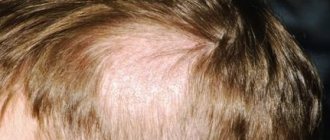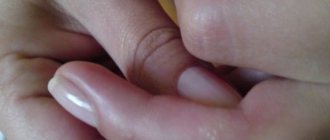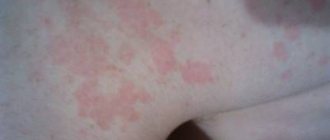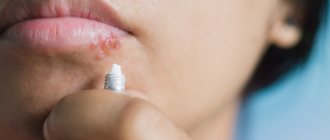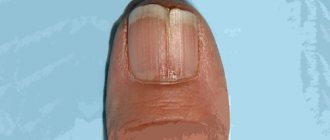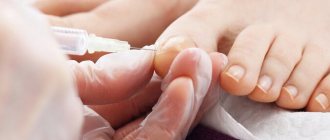It’s hard to think of a problem that can ruin your mood more than a sudden (and, as luck would have it, at the wrong time!) pimple that appears. And the appearance of acne during pregnancy is very frightening for expectant mothers. It’s not clear what to do: on the one hand, you want to look your best, but on the other hand, you’re scared to take any measures, because any cosmetic defect is much less dangerous than the likelihood of harming the baby. Meanwhile, there are more than enough methods for treating acne during pregnancy.
What is acne?
The term “acne” often refers to diseases of different nature. Most often we are talking about acne (common acne). Acne can manifest itself with a variety of elements, both inflammatory and non-inflammatory.
Non-inflammatory elements include:
- Open comedones, commonly referred to as “blackheads.” The appearance of comedones is caused by stagnation of sebum in the pores, the formation of “sebaceous plugs”. When exposed to air, sebum oxidizes and the pigment melanin is formed, which gives a dark color to the contents of the pores.
- Closed comedones (milliums) resemble white subcutaneous nodules. This is an accumulation of sebum in a pore that is not in contact with oxygen.
The inflammatory elements of acne are:
- Papules are small red nodules that protrude above the surface of the skin.
- Pustules are cavities with purulent contents, in the center of each of which there is a hair.
- Nodules are a complex form of acne that has a chronic course.
Blackheads are large, deep, painful, purplish-red lesions.
Stages of the disease
A small amount of non-inflammatory elements - comedones or millia - is not acne. These are signs of contaminated skin that needs hygienic cleaning and the correct selection of home cosmetics. If papules or pustules in the amount of up to 10 join comedones and milliums, we are talking about mild acne. The average degree is characterized by the presence of all of the above elements; the number of papulopustular formations does not exceed 40. Severe acne is manifested by the number of inflammatory elements more than 40, the presence of cysts and scar changes.
In severe cases of the disease, complications are quite likely. The most common consequence of acne is hyperpigmentation, or persistent discoloration of the skin. In favorable cases, hyperpigmentation may disappear on its own after 6-12 months. But often it persists for a long time, so methods have been developed to combat it. Extensive inflammation can lead to the formation of scars.
Risk factors: why acne appears during pregnancy
- The most common cause of acne is hormonal fluctuations. Even a healthy woman’s hormones “rage” during pregnancy. The hormone progesterone, which is responsible for pregnancy, can provoke the appearance or intensification of inflammation on the surface of the skin.
- Changes in immunity observed during pregnancy can also provoke the appearance of acne.
- Chronic constipation, which is common in pregnant women, can also worsen the condition of the skin, since constipation impedes the removal of waste products, which can have a negative effect on the skin.
- Quite often, the onset of pregnancy is associated with toxicosis and changes in taste preferences. A strong craving for sweets (for example, chocolate), as well as for salty and spicy foods, activates the sebaceous glands, dilates blood vessels and creates favorable conditions for inflammatory reactions.
- In some cases, pregnant women, fearing for the health of the baby, dramatically change the principles of skin care. Sometimes, instead of all skin care products, they choose the safest ones - baby cream or oil, which become the cause of acne. This is due to the fact that children's cosmetics have a different purpose - not to moisturize and nourish, but to soften the skin, so it should not be absorbed. The composition of children's cosmetics is rich in fats, which have the ability to clog pores (comedogenic effect). There are quite a lot of such products among ordinary facial cosmetics, so any new product can cause a similar reaction.
- Some medications (for example, dexamethasone, which is prescribed for hormonal imbalances in pregnant women) can provoke acne.
Acne as a sign of pregnancy before delay
Pregnant women who are not yet aware of their interesting situation often suffer from acne. This is the first sign of pregnancy before the delay. A woman does not even suspect that life has already begun in her stomach, and her face, shoulders and back may become covered with acne. Therefore, if you have a problem such as acne, then take a pregnancy test first.
However, even if it is negative, this does not indicate that there is no pregnancy. It’s better to repeat it in a couple of weeks or donate blood for hCG to know for sure.
How does acne occur in pregnant women?
Sebum is the secretion of the sebaceous glands located in the deep layers of the skin (dermis). The composition of sebum primarily includes fat-like substances of different structures. Released from the sebaceous glands, sebum evenly lubricates the surface of the skin, forming a protective film. Its main function is to preserve moisture in the skin, which means prolonging the health and youth of the skin. Moisturized skin is elastic, protected from microtrauma and bacteria, and also feels comfortable. The secretion of the sebaceous glands, together with the skin microflora and horny scales, forms the acid mantle of the skin, which provides protection against infections and the penetration of any foreign substances. Several factors play a role in the development of acne:
- Changes in the chemical composition and amount of sebum.
- Increased production of sebum - seborrhea.
- Obstruction of the natural process of exfoliation of dead skin cells, their accumulation on the surface of the skin - hyperkeratosis.
- Rancidity of sebum, a change in the acidity of the skin towards the alkaline side, which creates favorable conditions for the rapid growth of bacteria, which normally live on the surface of the skin, but in much smaller quantities.
The development of acne proceeds as follows. As a result of exposure to a provoking factor, the sebaceous glands begin to produce more sebum.
Often, sebum has a changed composition, is difficult to distribute throughout the skin, and therefore accumulates in the pore. Together with the keratinized epithelium, sebum becomes a breeding ground for bacteria that are harmless under normal conditions. Microorganisms begin to actively multiply, causing an inflammatory process that spreads to the subcutaneous tissue with the formation of inflammatory elements of acne.
Acne in pregnant women and the expected gender of the child
According to folk wisdom, when she conceives a boy, a woman becomes prettier: her skin is clear and beautiful, her hair is thick and silky. If there is a girl at heart, they believe that she is taking away her mother’s beauty: the pregnant woman suffers from excessive swelling, her hair becomes dull, falls out, and rashes appear on the skin. There is also a medical reason for this, based on the ratio of male and female hormones. Depending on whose hormones predominate, one of the listed effects can be observed and the gender of the child can be predicted from them: boy or girl.
As practice shows, acne alone is not an accurate sign of the birth of a boy or girl. They predominantly appear in the first months and disappear in the 2nd–3rd trimester, and other changes in appearance do not always occur as described.
How to treat acne during pregnancy?
Treatment of acne is carried out in several directions: eliminating blockage of the sebaceous glands, normalizing the process of exfoliation of dead skin cells, antibacterial effects. No less important is the correction of lifestyle and nutrition.
Recommendations for nutrition, lifestyle and skin care are suitable for any type of acne.
1. Nutrition. Acne is caused by eating foods rich in starch, fat, and spices. Strong tea, coffee, carbonated drinks, and sweets can also cause acne. In addition, they are not recommended for expectant mothers at all.
For fruits, give preference to apples, pears, and plums. Avoid citrus fruits and dried fruits; bananas and berries can be consumed in limited quantities. Vegetables are useful both raw and processed (preferably stewed or steamed). Eat porridge and unsweetened fermented milk products daily. The meat should be lean (chicken and veal are preferred).
2. Hygiene. You should wash and shower with warm or even cool water. For washing, you need soft, but at the same time effective auxiliary products (foam for washing). Large-pored sponges made from natural cellulose are not recommended, as they can damage the skin and cause infection. More suitable are disposable napkins made of non-woven material or soft terry cloths, which should be washed after each use and ironed with a hot iron. Use soft sponges and towels to care for your body. They must be individual. Towels should be washed in hot water.
3. Home pharmacy. For washing, you can use a decoction of chamomile, calendula, sage, celandine (pour 1 tablespoon of dry raw materials with a glass of boiling water - if you do this in the evening, you can wash with the decoction in the morning). It is acceptable to use water with the addition of lemon juice (1-2 tablespoons per liter of water). Once or twice a week you can make masks from white clay, masks from the pulp of cucumber, zucchini, chopped parsley (before applying to the face, add a teaspoon of lemon juice to the pulp). Apply the mixture to clean facial skin for 15-20 minutes, then rinse with cool water.
4. Medical cosmetics. There is a wide range of therapeutic skin care products. In addition to being highly effective, these products are characterized by careful dermatological control. The selection of such products should be carried out by a cosmetologist or dermatologist, especially during pregnancy, since some of them contain components contraindicated for pregnant women (for example, so-called retinoids - precursors of vitamin A, an excess of which can adversely affect the formation of the fetus).
Abstract
Dermatoses that occur during pregnancy are very important to know for the clinician, since they affect a large number of pregnant women and pose a danger to the fetus. These diseases include pemphigoid of pregnancy, polymorphous eruptions of pregnancy, intrahepatic cholestasis of pregnancy and atopic rash of pregnancy. This review describes the pathogenesis, clinical features and treatment of these dermatoses.
Introduction
During pregnancy, there are three groups of skin diseases. The first group includes benign diseases that arise as a result of hormonal changes that occur during pregnancy; the second group includes pre-existing diseases that worsened during gestation; The third group includes dermatoses specific to pregnancy [1].
Dermatoses of pregnant women are a specific group of itchy pathologies that occur only in pregnant women. Due to the unclear etiopathogenesis, rare occurrence and similarities in the clinical picture, there is ongoing debate about how to classify these diseases. The latest classification was proposed by Ambrus-Rudolph [2] in 2006, and includes pemphigoid of pregnancy, polymorphic dermatosis of pregnancy, intrahepatic cholestasis and atopic rash of pregnancy (Table 1).
Table 1
| Dermatosis | Pathogenesis | Clinical picture | Localization | Paraclinical diagnostics | Treatment | Risks to the fetus |
| Pemphigoid of pregnancy | Circulating IgG, complement activation, antibody reaction with the amniotic epithelium, placenta, skin basement membrane, leading to an autoimmune reaction and tissue damage with the formation of a blister. | Pruritic papules and plaques, ring-shaped vesicles, tense blisters on an erythematous background | Periumbilical region, extending to thighs, palms and soles | Histology: identification of superficial and deep lymphocytohistiocytic eosinophilic infiltrates; PIF: deposits of IgG and C3 on the basement membrane | Systemic corticosteroids at a dose of 0.5 mg/kg, with a gradual reduction to a maintenance dosage depending on the activity of the disease; topical GCS classes III and IV; Cyclosporine a, dapsone, azathioprine, or methotrexate (after childbirth) | Urticaria or vesicular rash in newborns (due to the transfer of antibodies from mother to fetus); premature birth, fetal malnutrition; toxicity when using cyclosporine A. |
| Polymorphic rashes of pregnant women | Overstretching of the anterior abdominal cavity due to an increase in body weight, leading to inflammation of the connective tissue; changes in cortisol levels; atopy. | Severely itchy urticarial rashes, edematous papules and plaques, papulovesicles, erythema, blisters, blisters. | Abdomen, without involving the umbilical area, buttocks, thighs, back | Histology: Dermal edema, with a perivascular lymphocytic infiltrate consisting of eosinophils, T cells and macrophages | Topical and systemic corticosteroids, antihistamines | There are no side effects associated with the disease and the use of systemic corticosteroids; use only antihistamines approved during pregnancy |
| Intrahepatic cholestasis of pregnancy | Hormonal changes, genetic predisposition, exogenous factors (seasonal fluctuations), diet. | Severe pruritus, without primary skin lesion, with or without jaundice | First on the palms and soles, followed by spreading to the entire skin; excoriation, prurigo, nodules | Increase in serum bile acids and aminotransferases | Ursodeoxycholic acid, phototherapy | Preterm birth, intrapartum fetal distress, stillbirth, vitamin K deficiency, coagulopathies |
| Atopic rash of pregnancy | Decreased production of cytokines by T-helpers of the 1st order, increased production of cytokines by T-helpers of the 2nd order | Skin itching, excoriation, secondary infection | 66% - eczematous skin lesions in areas typical of atopic dermatitis; 33% - slight itching, papules on the trunk and limbs | There are no pathognomonic symptoms specific to the disease, elevated serum IgE levels in 20-70% | Topical corticosteroids class II–IV. Topical GCS. Antihistamines. phototherapy Antibiotics in cases of secondary infection. | There are no risks, other than a high risk of the child developing atopic dermatitis in the future. |
The purpose of this review is to examine four specific dermatoses of pregnancy. Some dermatoses pose a risk to fetal development and are therefore an important topic for clinicians.
Pemphigoid (herpes) of pregnant women
Pemphigoid of pregnancy is a rare autoimmune skin disease that causes intense itching and occurs only during pregnancy. In terms of clinical and immunological characteristics, pemphigoid of pregnant women is similar to other cystic dermatoses.
Due to the similarity of the morphological picture - blisters - the former name of this disease is herpes of pregnant women. The name was changed due to the lack of connection with herpes virus infection. The disease occurs in the second and third trimester of pregnancy [2,3], but cases have been reported in the first trimester and postpartum period [2,4,5]. The prevalence of the disease is the same throughout the world and is 1:60,000 [6,7]. The pathogenesis is not fully understood, but in 61–80% of cases there is an association with HLA–DR3 and 52–53% with HLA–DR4 [8].
Pathogenesis
The primary immune response occurs within the placenta. Circulating IgG reacts with the amniotic epithelium of placental tissue and the basement membrane of the skin. Autoimmune reactions occurring in the skin are associated with the accumulation of immune complexes, complement activation, chemotaxis and degranulation of eosinophils, resulting in tissue damage and blistering [9]. The main initiating factor remains unclear, but it is assumed that the allogeneic or autoimmune reaction is associated with deviation from normal expression of the TI product by the major histocompatibility complex [10].
There are reports of cases of pemphigoid in pregnant women during menstruation and after taking oral contraceptives. These observations suggest a role for sex hormones in the pathogenesis of the disease [6,11,12], although there are also studies suggesting the opposite [13].
Clinical features
Pemphigoid of pregnancy begins with the appearance of intensely itchy urticarial ring-shaped rashes, then vesicles and large tense blisters appear on an erythematous background. The favorite location is the periumbilical region (Fig. 1). In 90% of cases, the rash subsequently spreads throughout the abdomen, and in some cases, to the thighs, palms and soles [11]. Often, the disease subsides in the last month and worsens immediately after childbirth. The activity of the process decreases and disappears during the first months after birth, and reappears during subsequent pregnancies. In most patients, the disease resolves into spontaneous remission, without treatment, several weeks or months after delivery.
Diagnostics
The diagnosis of pemphigoid in pregnant women is based on the characteristic clinical picture, histological examination and direct immunofluorescence. The classic histological picture is characterized by the presence of superficial and deep perivascular lymphohistiocytic eosinophilic infiltrates. Direct immunofluorescence reveals deposition of IgG and C3 complement on the basement membrane [4, 11]. Deposition of C3 complement is detected in 100% of cases, while IgG deposition is found only in 25–50% [11].
Treatment
Treatment of pemphigoid in pregnant women begins with oral corticosteroids at a dose of 0.5 mg/kg, then the dose is gradually reduced to maintenance, depending on the activity of the disease. For mild cases, it is possible to use topical corticosteroids of class III and IV. If topical and systemic corticosteroids are ineffective, treatment is supplemented with the use of systemic immunosuppressants, such as Cyclosporine, Dapsone, Azathioprine, Methotrexate (after childbirth).
The effect of pemphigoid in pregnant women on the fetus
As a result of transplacental transfer of IgG1 antibodies from mother to fetus, 10% of newborns develop a mild clinical picture consisting of urticaria or vesicular skin rashes [9] (Fig. 2). Pemphigoid in pregnancy is associated with premature birth and fetal malnutrition. Some researchers have suggested that abnormalities in newborns are associated with the use of systemic corticosteroids, but most likely this is due to the activity of the dermatosis, and not to the use of corticosteroids. A high risk of developing pathology in the fetus is often associated with the development of pemphigoid of pregnancy in the first and second trimester. Systemic use of GCS does not affect the outcome of pregnancy [14]. However, it is necessary to monitor the condition of the pregnant woman while taking systemic corticosteroids. Also, due to toxicity to the mother and malnutrition on the part of the fetus, careful monitoring of patients when taking Azathioprine is necessary. Azathioprine can be taken during pregnancy, but its use must be supervised. Methotrexate is contraindicated during pregnancy.
Comorbid diseases
Pemphigoid pregnancy is often associated with other autoimmune diseases, such as Graves' disease, thyroiditis, and pernicious anemia [5,11]. This is due to the presence of HLA antigens – DR3 and DR4 [15] in these autoimmune diseases.
Polymorphic dermatosis of pregnancy
Polymorphic dermatosis of pregnancy is a benign, self-limiting inflammatory disease, more often found in primigravidas in the third trimester or postpartum period [9,16,17]. Rarely occurs in subsequent pregnancies [17]. This is the most common dermatosis in pregnant women, its incidence is 1 in 160 pregnancies [9,18]. Although the incidence of the disease is high, the etiology is still unclear. There is a relationship with a large increase in body weight, immuno-hormonal changes, but not a single theory has yet been substantiated [3,9,18].
Pathogenesis
The pathogenesis of the disease has not yet been studied. It is assumed that overstretching of the abdominal wall leads to damage to the connective tissue, causing an inflammatory reaction [9,18]. In a study involving 200 patients with polymorphic dermatosis, a decrease in serum cortisol was found compared to the control group. Another theory is the presence of atopy in pregnancy. A study of 181 patients found that 55% had atopy [18]. There is still no evidence regarding the contribution of circulating immune complexes and the presence of HLA class to the pathogenesis.
Clinical features
The favorite localization of rashes is the abdomen, usually on striae, without affecting the navel area; the disease begins with the appearance of itchy erythematous urticarial papules and plaques (Fig. 3). Characterized by rapid spread to the thighs, buttocks, chest and back. Involvement of the hands and feet is rare [9]. The rashes are characterized by polymorphism: papulovesicles, purpura, vesicles.
Diagnostics
There are currently no diagnostic methods. Histopathology varies depending on the stage of the disease. Diagnosis is based on clinical picture and biopsy. A biopsy reveals superficial dermal edema, a perivascular lymphocytohistiocytic infiltrate consisting of eosinophils, T helper cells and macrophages. At later stages, epidermal changes are detected: hyper- and parakeratosis [9,16].
Treatment
Treatment is symptomatic. Corticosteroids with or without antihistamines are usually sufficient to relieve itching and rashes. In severe cases, the use of systemic corticosteroids may be necessary. More often, the disease resolves itself within a few weeks after birth without pigmented post-inflammatory scars.
Risks to the fetus
Polymorphic dermatosis of pregnant women is not dangerous for the fetus and newborns. The outcome of the disease in the mother is usually favorable. When taking topical and systemic corticosteroids, monitoring the condition of the pregnant woman’s body is necessary. When prescribing antihistamines, preference should be given to Cetirizine, Loratadine and Fexofenadine.
Intrahepatic cholestasis of pregnancy
Intrahepatic cholestasis of pregnancy is characterized by severe itching and secondary skin lesions in the third trimester of pregnancy. Cholestasis of pregnancy is a reversible form of cholestasis that develops in genetically predisposed individuals. Cholestasis of pregnancy does not belong to primary dermatosis, but due to the correlation of the manifestations of skin symptoms during gestation and the presence of risks to the fetus, it was classified as a specific dermatoses of pregnant women. The prevalence of dermatosis is highest in Scandinavia and South Africa, with a frequency of about 1%.
Pathogenesis
The pathogenesis is based on the interaction of hormonal, genetic and environmental factors [9]. Exogenous factors include seasonal environmental fluctuations [21], as well as dietary patterns and selenium deficiency [22]. The role of exogenous factors in the development of the disease is still being studied.
Clinical picture
Intrahepatic cholestasis of pregnancy is characterized by the presence of itching without primary skin lesions with or without jaundice. Incidence of jaundice: 0.02 – 2.4% [23]. Itching usually begins on the palms and soles and then spreads throughout the entire skin. Intense itching is often combined with secondary excoriations (Fig. 4). They are usually localized on the lower extremities, often in the lower legs. Symptoms usually resolve within 1–2 days after delivery, but may persist for 1–2 weeks [9]. There is a high risk of recurrence of the disease with repeated pregnancies (50–70%), as well as with the use of oral contraceptives.
Diagnostics
The diagnosis is based on the presence of skin itching, increased levels of bile acids and aminotransferases.
Treatment
The goal of treatment is to reduce the level of bile acids in the blood serum and eliminate skin itching. To relieve skin itching, ursodeoxycholic acid can be used; no side effects or effects on pregnancy outcome are observed with their use [24]. The use of cholestyramine, antihistamines, topical and systemic corticosteroids does not have an evidence base and may have an adverse effect on pregnancy outcome [1,24]. In exceptional cases, phototherapy may be used.
Risks to the fetus
Cholestasis in pregnancy is associated with preterm birth (20–60%), followed by the development of intrapartum fetal distress (20–30%), as well as stillbirth (1–2%) [9]. Severe cholestasis can lead to vitamin K deficiency and coagulopathies in pregnant women and children [1]. This needs to be monitored closely during and after pregnancy.
Atopic rash of pregnancy
Atopic rash of pregnancy is a benign condition characterized by pruritic eczematous or papular lesions, most often in those predisposed to atopic dermatitis or with a history of atopic dermatitis. The term "Atopic rash of pregnancy" refers to a heterogeneous group of pruritic disorders during pregnancy, such as prurigo gravidarum, pruritic folliculitis of pregnancy, and eczema gravidarum. Atopic rash is the most common cause of pruritus during pregnancy [2,16]. The disease has two groups of patients: the first group of patients who have a history of atopic dermatitis, and the second group of patients includes pregnant women whose atopic rash appeared for the first time during pregnancy. In 80% of pregnant women, the rash appeared for the first time [2]. The disease develops early in the first or second trimester and usually recurs in subsequent pregnancies. Most pregnant women with atopic rash have elevated levels of IgE in the blood. Such pregnant women have positive tests for allergens, as well as a family history of atopic dermatitis.
Pathogenesis
It is believed that the pathogenesis of atopic rash is based on immunological changes. Pregnancy is associated with a shift in the immune response towards the production of Th 2nd order cytokines (IL - 4 and IL - 10). The production of anti-inflammatory cytokines is responsible for skin changes during pregnancy [25].
Clinical picture
The main clinical features are pruritus, prurigo, excoriation, and eczematous skin lesions (Fig. 5). In two thirds of pregnant women, the rash is localized in places typical for atopic dermatitis, on the face, neck, flexor surfaces of the limbs; in the remaining pregnant women, the rash is localized on the torso and limbs and is accompanied by slight itching. Scratching leads to excoriation and secondary skin infections. Eczema usually disappears after delivery.
Diagnostics
The diagnosis is based mainly on the clinical picture. There are no pathognomonic symptoms for atopic rash in pregnant women. An increased level of IgE (20–70%) can be detected in blood serum [2].
Treatment
Treatment depends on the severity of the disease. Usually, the use of topical corticosteroids of class III and IV is sufficient, but in severe conditions, systemic corticosteroids and antihistamines may be necessary. If treatment is ineffective, phototherapy may be used. When a bacterial infection occurs, the use of antibiotics is necessary.
Risk to the fetus
Atopic rash in pregnancy does not affect the development and condition of the fetus and newborns, but indicates that the child has a high risk of developing atopic dermatitis in the future.
conclusions
Skin itching and rashes are common during pregnancy and are usually benign and self-limiting. They constitute a small group of inflammatory diseases associated with pregnancy and/or the early postpartum period, which can lead to severe fetal pathologies, stillbirth and premature birth [23].
Itching is a common symptom for this group of diseases. The diseases differ in the morphology of the rash, localization, and time of occurrence, but at the same time they have much in common. For inexperienced clinicians, it can sometimes be difficult to make a diagnosis based on clinical presentation alone. Ancillary diagnostic methods include histopathology, blood tests, and direct immunofluorescence. For pemphigoid of pregnancy and cholestasis of pregnancy, laboratory tests are fundamental. Therefore, it is necessary to take into account the history, clinical picture and histopathology to make a diagnosis.
There is a risk to the fetus only with pemphigoid and cholestasis of pregnancy. For a successful pregnancy outcome, multidisciplinary monitoring is required with the participation of a dermatologist, pediatrician, obstetrician, and gastroenterologist.
Drug therapy for acne during pregnancy
1. Antibacterial agents
- Benzoyl peroxide (Baziron AS) is a drug with a pronounced antimicrobial, anti-inflammatory and comedolytic effect (dissolving sebum). Adsorbs (absorbs) excess sebum and moisturizes the skin. During pregnancy, the use of this drug is permissible only on the recommendation of a doctor.
- Antibiotics: tetracycline, clindamycin (Dalacin T), erythromycin (Zinerit). They are highly effective in the presence of inflammatory elements of acne. Antibiotics for external (local) use are used strictly as prescribed by a doctor (if necessary, their use during pregnancy is acceptable). Antibiotics for internal use, as a rule, are not used during pregnancy or are prescribed for a limited period of time.
2. Acids. Mostly acid-based preparations are found among professional cosmetics. Of the professional acid-based preparations during pregnancy, products with a concentration of no higher than 30% are acceptable. Among medications, the azelaic acid drug skinoren in the form of a 15% gel and 20% cream has proven itself well.
Acids have the widest spectrum of action against acne. They not only have anti-inflammatory and antibacterial effects, but also exfoliate excess keratinized epithelium, eliminating hyperkeratosis. In addition, acids have the ability to regulate the functioning of the sebaceous glands, reducing the synthesis of sebum. Acid-based drugs are not addictive, so they can be used for a long time. The effect of their use is also somewhat delayed, the first results appear 2-3 weeks after the start of use. This group of drugs is also used to treat post-acne hyperpigmentation.
3. Retinoids. This is the most effective category of products used to treat acne. Unfortunately, these same drugs have the widest list of complications and contraindications. By their structure, retinoids are a derivative of vitamin A. Among retinoids, there are products for both local and systemic (internal) use. Among local (topical) retinoids, adapalene (Differin) is most widely used; Lokacid, Retin-a and other drugs are also used. The drug Roaccutane is used for the systemic treatment of acne. Currently, this is the most powerful remedy for combating acne. Retinoids have a powerful anti-inflammatory and anti-comedogenic effect and prevent the formation of scars. Due to the potential risk to the baby's health, drugs in this group are not prescribed during pregnancy and breastfeeding.
4. Hyaluronic acid preparations. Among drugs based on hyaluronic acid, the first place is occupied by the drug curiosin. It contains hyaluronic acid and zinc. The drug has an anti-inflammatory and regenerating effect, improves blood circulation, accelerates healing and moisturizes the skin. Curiosin is used independently for mild acne and sensitive skin, or as an adjuvant.
mesotherapy are used to treat acne.
- introduction of medications into the skin, ozone therapy, antiandrogenic (acting against excess male sex hormones) drugs (contraceptives, etc.). All these methods are permissible for use only after childbirth.
What is the basis for such a harsh sentence: why did acne appear on the face during pregnancy?
Acne appeared on the face during pregnancy.
If we discard the “water” and idle discussions about the joys that a woman experiences during the period of bearing a child, then the essence of publications on the topic of treating acne during pregnancy comes down to the following provisions, which have no “ground”:
- Acne during pregnancy is natural.
- There is no need to pay attention to acne during pregnancy at all, since it is just a small skin defect.
- After pregnancy, acne will disappear on its own.
- To combat acne during pregnancy, you can only use peeling.
However, one fair thought is still present in such a question. Briefly it can be stated as follows:
- Retinoids and peroxides should not be used to treat acne during pregnancy.
Of course, such information from the Internet can in no way satisfy a young woman who has encountered acne during pregnancy and immediately wants to receive specific recommendations for combating it, and not general discussions.
So, first of all, you should understand why of 99% of commercially available anti-acne medications contraindicated . The fact is that most modern such drugs contain compounds as active ingredients that are dangerous to the development of the fetus.
In such a situation, what can pregnant women do to combat acne? It is quite enough: active prevention of their occurrence, plus a certain amount of medications that can, if not cure acne completely, then at least effectively prevent their occurrence.
Myths about acne
- Hot water washes away excess fat well. Hot water increases blood flow to the surface of the skin and stimulates sebum synthesis. As a result, the skin becomes increasingly oily, and with weak blood vessels, a visible capillary network may appear.
- Only soap gives a true feeling of cleanliness. Alkaline soap not only removes excess sebum, but also damages the skin's natural protective barrier. The skin becomes defenseless against external influences, and the risk of irritation and inflammatory elements increases. To remove impurities, use special gels and foams for problem skin (it is important that they are of high quality, since many cheap cosmetics contain aggressive surfactants).
- Alcohol lotion fights pimples and excess fat. Alcohol lotion, like alkaline soap, not only washes away excess sebum, but also damages the epidermis. The information that there is no sebum on the surface of the skin gets into the dermis. This signal stimulates the sebaceous glands to produce even more sebum. For oily skin care, only alcohol-free lotions and tonics are recommended.
- Oily skin does not need cosmetics. Like any other skin type, oily skin needs hydration and protection. Therefore, after washing and applying toner, cream should be applied to the skin. It is important that this product has a light texture and does not clog pores. Therefore, look for the words oil-free (fat-free) or non-comedogenic on the label.
- The sun dries out pimples. A tan (natural or fake) can mask acne, temporarily improving the appearance of your skin. However, ultraviolet radiation in large doses sharply reduces the protective ability of the skin, stimulates the activity of the sebaceous and sweat glands, activates blood flow and promotes a more violent inflammatory reaction. The long-term result of ultraviolet radiation, alas, is unfavorable.
- Acne will go away only after childbirth. Factors that provoke acne will not disappear at the same time as childbirth. In addition, most of them existed long before pregnancy and simply worsened during this time. 9 months of pregnancy is absolutely no reason to put up with acne. If you contact a qualified specialist in a timely manner, you won’t have to wait long for results, since there are quite enough effective ways to deal with acne during pregnancy.
Localization of rashes
During pregnancy, acne is localized mainly on the face. Sometimes a woman considers heavy rashes to be the first sign of conception, since they appear even before the delay. Acne in pregnant women appears in different places:
- On the neck, chest. The cause is mainly hormonal imbalance. In hot weather, acne activation is caused by dust and increased sweating.
- On the back. With excessive sweating, wearing synthetic clothing, liver diseases.
- On the stomach and buttocks. With a lack of air flow, hypothermia.
Acne is most often observed on the forehead and chin. In addition to the above, the following factors can also provoke it:
- frequent touching of the face with hands;
- habit of resting your chin;
- wearing synthetic hats;
- long bangs.


